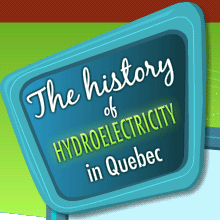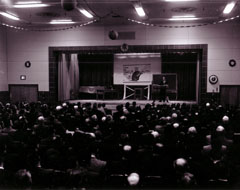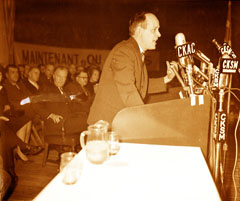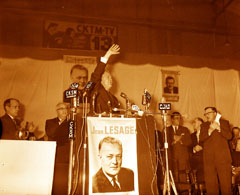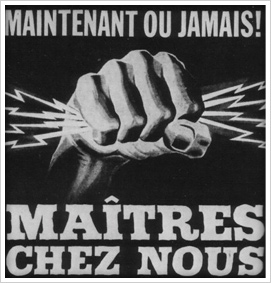Home > History > The Nationalization of Electricity
The Nationalization of Electricity
On May 1, 1963, the Government of Quebec acquired eleven privately owned companies producing and distributing electricity in Quebec and merged them with Hydro-Québec. It was the most impressive financial operation in the history of Quebec. However, the story of the nationalization of electricity in Quebec began in 1944 with the purchase of the Montreal Light, Heat and Power Company by the Liberal Government headed by Adélard Godbout.
During the 1930s, there was great popular discontent. The abusive rates charged by power companies and their exorbitant profits generated public hostility. In 1934, the Taschereau Government created the Lapointe Commission. In their report, the Commission condemned company abuse without however, leaning favourably towards nationalization.
Problems continued to persist for a good decade before the government of Premier Adélard Godbout finally nationalized the Montreal Light, Heat and Power Company on April 14, 1944. A new government corporation known as Hydro-Québec took over the supply of electricity on the island of Montréal.
In 1962, outside of Montréal, private company rates were high and customer service often poor. René Lévesque, then Minister of Natural Resources for the Liberal government of Premier Jean Lesage, was displeased with the situation and decided to attack the private companies. His waged war on eleven companies, including the powerful Shawinigan Water and Power Company, reigning as lord and master over a large portion of Quebec.
Pushed by his Minister of Natural Resources and public opinion, Jean Lesage took action. After a mere two years in office, he called an election focusing on the nationalization of electricity. The liberals returned to power with a sweeping majority. On May 1, 1963, Hydro-Québec took possession of the eleven companies and began to unify and modernize the different power networks.
